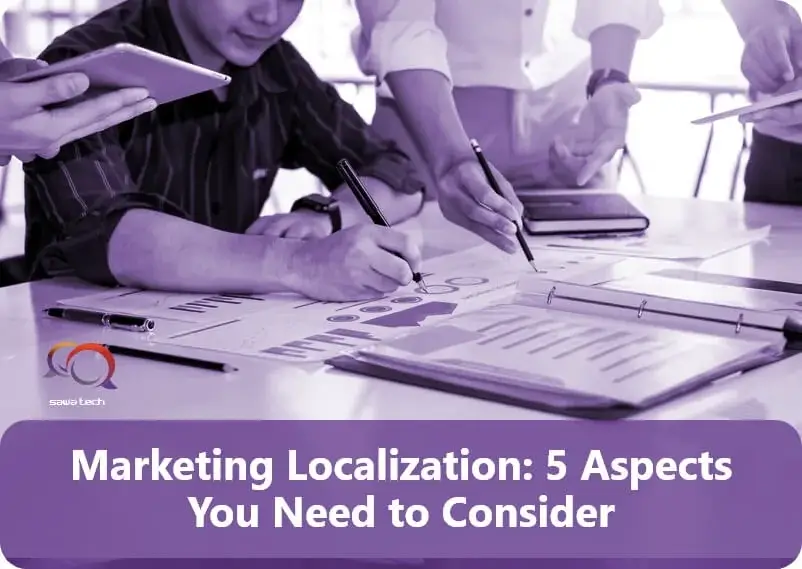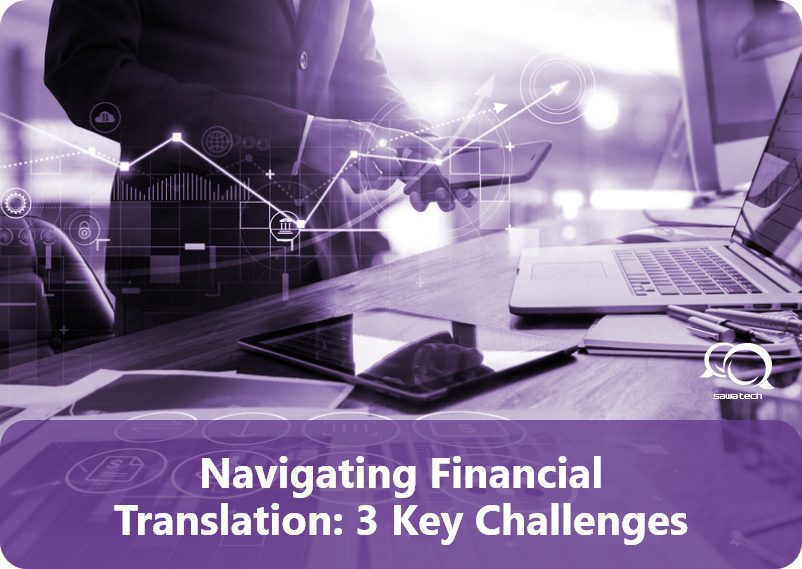Why do companies choose to spend so much money on marketing? The answer is relatively simple: good marketing equals better sales!
The main goals of marketing are to raise brand awareness and, in turn, generate sales and increase revenue. Marketing achieves that purpose by appealing to the market’s needs and tailoring products to fit different markets.
But today, brands like yours aim to expand their business into different markets. And you cannot do that without marketing localization services.
But this blog isn’t about why you should go for marketing localization. We’ve already established that.
It’s about the how!
Whether it’s your website, social media, or printed marketing materials, there are some aspects that are often overlooked when going for marketing localization services. Let’s discuss those, shall we?
Table of Contents
- 5 Aspects You Need to Consider in Your Marketing Translation Plan
- Sawatech: Your Top Choice for Marketing Translation and Localization
5 Aspects You Need to Consider in Your Marketing Localization Plan
1. Translation Accuracy
Günter Grass says about translation that it is “which transforms everything so that nothing changes” , a quote that perfectly captures the essence of translation: accuracy. Translators may make changes, but the goal is to always be true to the original message.
There is always emphasis on the importance of translation accuracy when it comes to technical documents like those in the legal or medical industries. This is typically normal. Marketing campaigns, on the other hand, don’t get the same attention.
Maybe that’s why some marketers just opt for machine translation in their localization strategy. Is that the right choice, though?
In marketing localization, accuracy is as essential as in any other industry; inaccurate translations can result in ambiguity, misinterpretation, and even offense, in some cases, to the target audience.
For your customer-facing materials, these can repel your audience.
The success of your global marketing strategy depends on 2 main pillars. You can’t afford to lose one of them.
- Linguistic accuracy
- Cultural relevance
Want to hear an example of the significance of translation accuracy in marketing?
In 2009, HSBC launched a marketing campaign in the U.S. under the slogan “Assume Nothing”. The Spanish translation wasn’t as clever as the original slogan. It was mistranslated into “Do Nothing”. It was heavily ridiculed by Spanish native speakers, and HSBC had to withdraw the campaign.
HSBC then had to spend $10 million on a rebranding campaign to fix that mistranslation. That’s what inaccurate translations do to your business.
2. Cultural Nuances
In its essence, marketing is centered around customers and their needs, not the brand, and appealing to them. No matter how brilliant the campaign sounds, if people don’t like it, then your mission is not-accomplished!
When expanding into a new market, the needs of your new audience are different from your local one. And their needs are always shaped by their culture.
To align with your customers’ needs, you should consider cultural nuances in your marketing localization strategy. Cultural nuances include customs, values, different communication styles, colors, symbols… etc.
For instance, when you’re localizing your website, you need to consider the appropriate layouts, colors, visuals, customer representations, and similar nuances. Some branding colors or logos might repulse your audience.
You also need to consider your marketing tone for your visual ads. For instance, a direct and assertive marketing tone might sound persuasive to some cultures but aggressive or downright rude to others.
You don’t want to offend your customers, right? After all, one mistake is more than capable of harming your brand’s reputation, especially when you’re entering a new market.
How? Let’s see an example.
In the 1960s, Pepsi launched a marketing campaign in China with the slogan “Come Alive With the Pepsi Generation.” However, the Chinese translation of the slogan was “Pepsi Brings Your Ancestors Back from the Grave,” which was viewed as culturally insensitive and offensive in Chinese culture.
Remember, the more respect you show to your audience’s culture, the more successful your marketing is. The way you handle cultural nuances could make or break your marketing campaign.
3. Local Trends
Digital marketing is known to take advantage of popular trends. By incorporating current trends into marketing, businesses can create messages that resonate with their target audience and build stronger emotional connections with them.
A recent example of that is how brands like Mcdonald’s Egypt are using the Oppenheimer Versus Barbie trend to market themselves.

However, not all trends are universal, like this example.
Quite often, trends are location-specific and mostly change from one country to another. Meaningly, local trends are directly related to the daily events that take place in a certain country. This can include trending songs or movies, memes that go viral, pop culture, and more.
This creates a sense of familiarity and connection between the brand and the customer. It feels humane. They’re people and they’re talking to me, not robot-like. That’s what your audience is looking for.
4. Emojis and Hashtags
Social media is an essential part of digital marketing. By nature, social media is more conversational than other forms of marketing, and here come Emojis and Hashtags.
Localizing your emojis is an integral (and fun) part of digital marketing. You want to use emojis and let your audience know you speak in their language, even if it’s emojis.
Surprisingly, emojis’ meanings can differ greatly from one culture to another. What may sound fun in one culture may be extremely offensive to your target audience.
For example, the snake emoji is seen as a symbol of good luck and prosperity in China and Japan. However, in Western cultures, the snake emoji is often used to represent deception or betrayal.
In addition, hashtags are a remarkable part of digital marketing. They boost audience engagement and work in favor of online campaigns. Their target is to help you reach a wider audience!
To take the best out of hashtags when entering a new market, you need to localize your hashtags too and take into account things like language, slang, and even pop culture references.
You need a localized set of hashtags because people’s search habits and use of keywords vary across the globe. And depending on the trending topics in a country, people might use serious hashtags or funny or ironic ones.
That needs localization and requires a local expert deeply immersed in the culture of the country in question.
5. Visuals
When it comes to marketing, visual content is king. From ads and videos to brochures and infographics, visuals are the backbone of any successful marketing campaign.
However, when creating marketing visuals for a foreign market, it’s not enough to just translate the text into different languages. You need marketing localization for your visual content as well.
Beyond textual content, localization involves adapting your visuals to the cultural and linguistic nuances of your target market.
This means taking into account factors such as language conventions, imagery, color, and even humor. What might be considered humorous or eye-catching in one culture might be seen as offensive or confusing in another.
For example, the color black is associated with elegance and sophistication in Western cultures but with death and mourning in many African cultures.
Likewise with symbols. For instance, the owl is associated with wisdom and knowledge in Western cultures but with death and witchcraft in African cultures.
Ultimately, the goal of your marketing localization is to create content, including visuals, that feels like it was specifically created for your target market. By taking into account the cultural context of visuals, your marketing campaign would feel local and speak to their hearts.
A famous example of that is when Coca-Cola launched a campaign featuring personalized bottles with Chinese names printed on them when expanding to China.
In addition, the brand used red and gold colors in their visuals, which are associated with happiness, good fortune, and prosperity in Chinese culture, and the entire campaign resonated perfectly with the audience.
Do you want to know more about successful marketing localization campaigns?
This free white paper is for you.
Sawatech: Your Top African Translation Agency
Sawatech is a translation agency based in South Africa. For 11 years, we’ve been delivering translation services in more than 120, specializing in African languages. We provide high-quality, multidisciplinary services, the fastest turnarounds, and cost-effective prices.
Based on our location, we have a wide range of African expertise in Swahili, Arabic, Yoruba, and much more!
If you’re looking for top-notch African language translation, look no further than Sawatech.
The final question remains, should we rely on ChatGPT and AI in translation? That’s fairly your choice.
But if you’re looking for a professional human translation in 120 African languages, Sawatech has got you covered.




